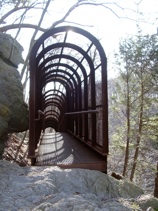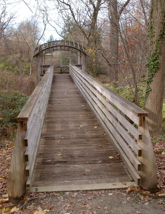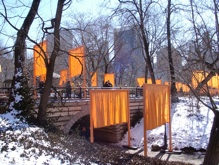








First, let us say that in the postmodern world of sculpture there needs to be more going on than just an object with three dimensions. Yes, that definition still does count, but the ante is ever going up. Artists, as a rule, will stretch boundaries and challenge norms – that’s a given. What I hope to explore is how sculpture has broken its mold, so to speak, by becoming less definable, sometimes less solid, often larger scale and even more integrated in its environment. Sculpture stopped being a parlor tchotchke about a century ago, then moved into galleries that kept increasing in size to accommodate the works’ expanding scale, and has been living outdoors mostly (much as it had always done in ancient cultures) for a few decades in the late 20th century. Installation art started the notion of a work created for a unique and sometimes temporary place, as site-specific sculpture did (though not so easily temporary), in the vast outdoors. The indefinable wholeness that is present in a really great work/site balance is, to me, the highest art form.
In the 1960s-’70s artists wanted to expand the scope of the marks they would leave behind. Politically, too, they wanted to move out from the control of the gallery system and its commercial focus – literally move outside. Earthworks had been made in ancient cultures dating back thousands of years – megaliths, dolmens, mounds, cairns, inscribed ground etchings – works that are permanent and intrinsic to the landscape that the artists inhabited but also to their cultural expression. Since the purpose of these built works is often unknown, I would have to say that the only commonality that land art of the 20th century has with the ancient variety is the connectivity to site, but contemporary sites tend to be chosen for very different reasons and, often, are less loaded with ritual or cultural meaning than the ancient ones were. And, in the 20th century, since man and machine could alter any obstacle that nature presents, the results were far more invasive and obtrusive than perhaps they should have been. The next logical step, then, was environmental art, often reclamations of industry-destroyed landscapes, which always had the underlying theme of reversing the effects of the heavy hand of man and causing the viewer to look and think about the results – although, in thinking about it, one could arrive at the conclusion that an up-side to inflicting damage to the environment results is the creation of opportunities for artists.
The point, though, is that emotional power – that which is present and has a presence – can be expressed in site art no matter what culture it originated from and no matter its intended purpose, since it is the object in its site that we relate to. Scale, context, surprise have their own meanings; then there is the juxtaposition of human-made with nature that can generate an inexplicable give-and-take that leaves both forever improved, the dialogue between them being the final art form.
For a few decades, artists have been commissioned by private collections to create site-specific works, both indoors and outside. Previous to that, artists were commissioned by governments to come up with works for newly created dead spaces in the urban environment. It is a different approach, a different thought process and a different result. Some artists have drifted like cream to the top of the field because they have a sensitivity to site, an eye for nature, a strong sense of place or a feel for the land. Others continue to do what they do regardless of the setting.



Specific Art Sites

art sites visited


Effigy Tumuli
Ottawa, IL
Dan Flavin Art Institute
Bridgehampton, NY
The New York Earth Room
SoHo, NYC
Broken Kilometer
SoHo, NYC
Glass House
New Caanan, CT
Opus 40
Saugerties, NY
Paley Park
NYC
also


Sky Mound
Hackensack, NJ
Times Square Sound Art
NYC
The Gates, Central Park
NYC
Time Landscape
NYC

Positive attributes


Artwork:
Powerful and interactive with surroundings
Site:
Attractive and varied landscape, but not overwrought
Space:
Scale should be related to work’s scale or have a meaningful dialogue with it
Location:
Works should be sited with some kind of purpose in their placement

NEGATIVE attributes


Artwork:
Merely plopped down in an empty space or, worse, framed by flowers
Site:
Too decorative, so that it competes with art; or just an unkempt weed field
Space:
Situating a sculpture just because there is an open space that needs filling
Location:
If either the artwork or the land take precedence over the other

favorites


Dan Flavin Art Institute
New York Earth Room
Opus 40
Times Square Sound Art
to-do list


Lightning Field
Quemado, NM
Roden Crater
Flagstaff, AZ
Spiral Jetty
Corinne, UT
Chinati Foundation
Marfa, TX
City
Hiko, NV
Rothko Chapel
Houston, TX
Serra Sculpture Park
St. Louis, MO



Probasco Haus Press


Left: Fingerspan, by Jody Pinto, Wissahickon Park, Fairmount Park, Philadelphia, PA
Center: The Gates, by Christo & Jeanne-Claude, Central Park, NYC
Right: Pavilion in the Trees, by Martin Puryear, Lansdowne Glen, Fairmount Park, Philadelphia, PA

Seeking the Relationship: Art to Site





